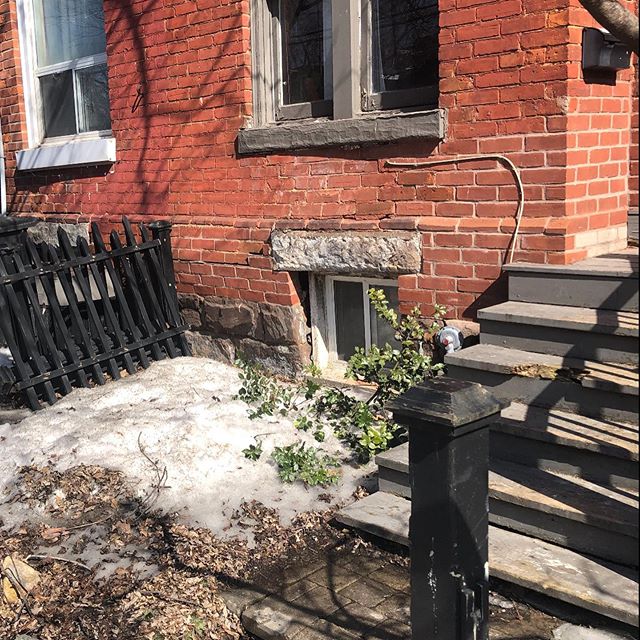What Causes Cracked Bricks and How to Replace Them
A common question posed to our masons when they are replacing bricks on a house is, “how come our bricks have cracked”?
When a person refers to the term “cracked”; specifically they are describing the phenomenon which occurs when moisture has infiltrated the bricks in a masonry wall or chimney; and the saturated brick has lost it’s facing, particularly after a cold winter season.
The appearance is such that the front of the bricks looks like the facing has come off as if someone chewed the outer brick surface away. Further observed; can be hairline cracks or fissures appearing in the body of the brick itself.
Essentially what has taken place is that as moisture freezes inside the brick, it subsequently expands and shales apart.
The root cause of the problem is, of course, water ingress. Water enters the brickwork usually through deficient mortar joints, or through the tops of cement chimney caps which are compromised. Other common areas of damage can be found where a stone or concrete windows sills, or parapet walls, have voids in connecting mortar joints.
The correct solution involves removing the individually damaged bricks, and replacing them with the same type, or closely matching bricks. On older homes; certain styles and colours of bricks are no longer made. Under such circumstances; the mason can do one of two things.
For heritage applications; harvesting bricks from a less visible part of a building, or sourcing donor bricks from another structure; can be the best approach to maintain the building’s character.
Of course part of the restoration process involves replacing missing or cracked mortar joints in relation to any brickwork being replaced. This is why tuck-pointing is an important maintenance step; especially on older buildings. By staying on top of deficient mortar joints; the bricks may last considerably longer.
Also important to note is that bricks manufactured of a certain era will have had a glazing material incorporated in the original firing of clay brick. Over time the glazing can wear off, and the clay brick can be more vulnerable to water damage.
In decades past; the practice of sandblasting bricks to remove paint or to “clean” the appearance of the bricks was a common practice. Unfortunately, the activity often served to damage the bricks where they became more vulnerable to water ingress. There are sealer products available that can be applied to help restore the brick’s ability to repel water.
Certain types of bricks such as concrete brick (often referred to as “Roman” brick); was commonly used in residential construction back in the late fifties through to the early seventies. Such bricks tended to be more vulnerable than fired clay bricks, to cracking when infiltrated by moisture.
When supplying a cost for replacing cracked bricks; it is often done on a per brick basis if the job is very small. Typically; there is a minimum cost involved which is necessary to organize for such work. Where there are larger areas to be done; such work is often quoted by the square foot. In addition to calculating the field areas requiring attention; other costs necessary to complete such work involve the time necessary to source materials, prepare the site, erect scaffolding where applicable, dust control and property protection, as well as safety elements involved to be compliant with Ministry of Labour Requirements for Health and Safety.
On some projects where there are large or widespread areas requiring attention; a building owner may elect to restore the brickwork using a phased approach. Some work may be scheduled year over year until eventually the building is restored from top to bottom.
When one considers the durability that brick provides over many decades; investing in comprehensive repairs of cracked bricks and deficient mortar joints, proves to be generally far more cost-effective than re-bricking or installing a new exterior stucco system. It also helps maintain the original heritage character of the home or building.
When undertaking such work, it is important to hire a qualified brick mason that possess the experience to complete such retro-fit work, and who maintains the proper liability insurance, and worker’s compensation coverage for the protection of the home or building owner.
The mason experienced in such restorative work will have the techniques necessary to tint mortars and source correct brick matches to provide a superior finished result.
To learn more about the repair of damaged bricks, block or stone, contact AVENUE ROAD MASONRY or visit them online at: www.avenueroadmasonry.com

